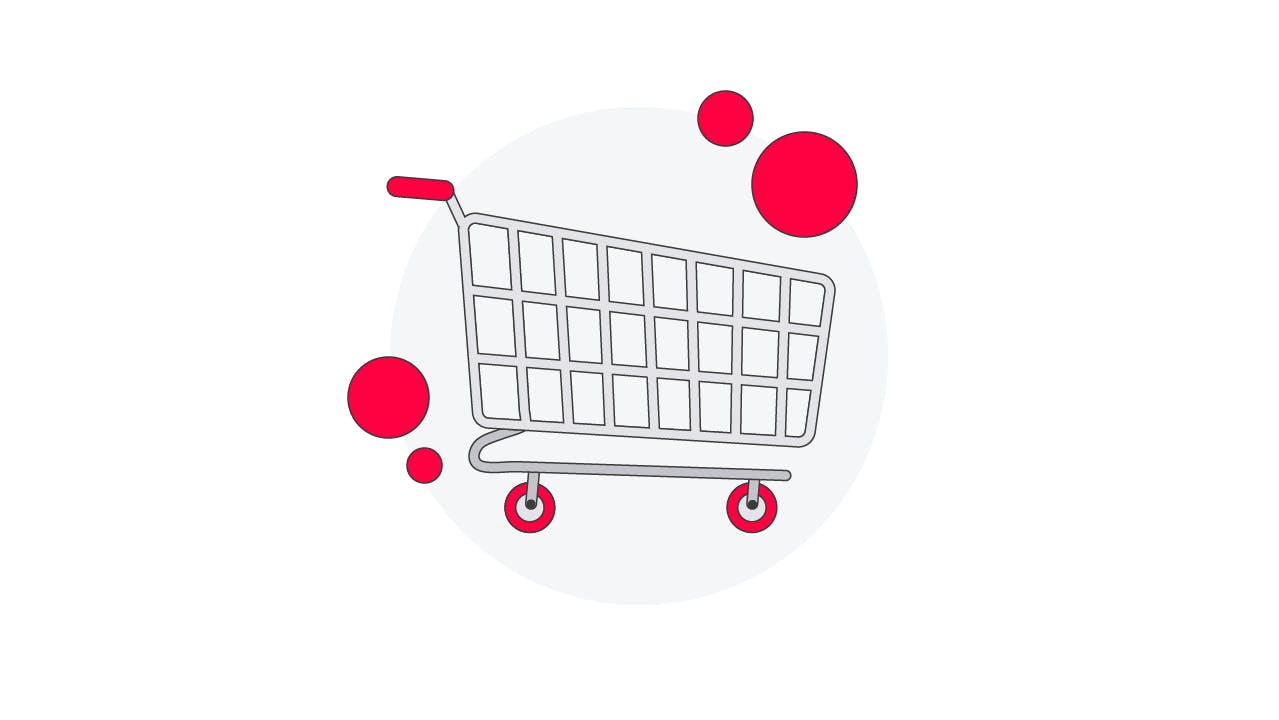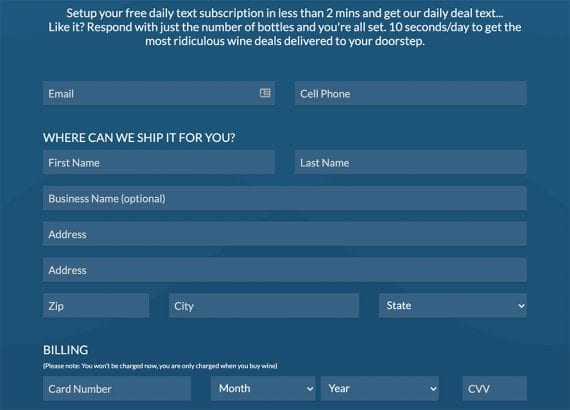
While sales growth remains steady, overall online grocery sales have naturally dwindled from the height of the pandemic. Research from Morning Consult has found that the share of US consumers who report ordering groceries online at least once a week has declined among the most engaged demographics. It found that, among high-income households, weekly online grocery ordering fell from 29% in October 2021 to 18% in April 2022.
Here’s a selection of stats to illustrate what’s happening, and how online and omnichannel grocery retailers are responding.
Despite overall online sales falling, Tesco says that its online business has “remained significantly larger than before the pandemic, with two year like for like of 66%, which equates to £2.3 billion of additional online sales.”
1. Latest stats highlight areas of sustained demand
Percentage of UK over-65s buying groceries online has doubled in 3 years
In addition to this, and aligning with Tesco’s focus on value, the supermarket is rolling out a click-and-collect membership scheme plus two saver delivery tiers, with prices starting at £2.49 a month for ‘Anytime Click + Collect’, and £4.99 for ‘Off Peak Delivery Plan’ – both of which involve lower minimum basket prices.
Indeed, McKinsey’s research states that one-third of consumers who shop online weekly now buy their groceries from three or more ecommerce players. Online offerings are likely to become even more differentiated in future (including ‘q-commerce’, click-and-collect, and scheduled deliveries for stocking up), with each serving the specific needs of additional consumer segments and their shopping requirements. As Ocado has shown, this could result in lower average order value for individual grocery retailers.
The Covid-19 pandemic led to an acceleration in online grocery shopping, but market growth has since levelled off. According to the ONS, internet sales as a percentage of total retail sales in the UK (not just grocery) stood at 18.7% in July 2019. While this surged to a height of 37.8% in January 2021 – notably during the second UK lockdown – it has since fallen to 25.3% in July 2022.
Older shoppers are more likely to be high-spend and online-only
What’s more, when older consumers do buy online, the survey results indicated that their spending matches as well as exceeds that of younger consumers. Spryker and Appinio also found that this demographic is the most likely to want to switch all of their shopping online within the next two years, partly due to the ongoing threat of Covid.
As a result, Dunnhumby suggests that in-store grocery consumers may be more loyal, with online and omnichannel shoppers buying where and when it is most convenient for them.
Discount grocery retailers Lidl and Aldi continue to steal market share from omnichannel retailers, as consumers increasingly shift their spend to value stores.
Groceries now account for 8.9% of total US ecommerce share
McKinsey has predicted that smaller grocery baskets will become a common occurrence, driven by consumers splitting their purchases between ecommerce players depending on need.
Together, Lidl and Aldi have gained 1.8% of British grocery sales over the past 12 weeks, which Kantar says represents a £2.3 billion annual shift in spending towards the discount retailers.
2. Enthusiasm returns for shopping in-store
Frequency of online grocery orders declines among most-engaged consumers
Kantar figures state that 12.6% of UK grocery sales were carried out online in March 2022 compared with 8.0% three years ago – a significant rise and one that suggests adoption will be permanent.
Data released by Adobe suggests that groceries has become a major ecommerce category in the US, now accounting for 8.9% of overall US ecommerce share.
Global consumers prefer in-store grocery shopping
According to Kantar, Aldi’s share rose to 9.1% in the four weeks to 7th August 2022, which means it will soon overtaken Morrisons to become the UK’s fourth biggest supermarket. This time last year, Morrisons held 10% share of the market.
Morning Consult’s ‘The State of Retail & E-Commerce’ report for H2 2022 states that preferences for in-store grocery shopping remain high across the globe. The study, based on survey interviews with more than 15,000 adults from countries including the UK, US, France, and China, found that 83% of consumers prefer to shop for groceries and household goods online versus 15% who prefer to shop online.
3. Consumers seek out value and convenience from multiple retailers, shifting away from single weekly shop
Ocado sees baskets shrink despite growth in active customers
While the study suggests that over 55s are less naturally pre-disposed to buying online groceries than younger consumers (partly due to location), it found 55 to 65-year-old respondents to be the most likely to say that they have moved all of their shopping online in the past few years.
Adoption of online grocery shopping has certainly increased since the onset of the pandemic, though not quite as dramatically as previous reports of ‘10 years’ worth of growth’ might suggest.
Differentiated offers will result in split baskets
Indeed, Ocado is seeing customers purchase fewer groceries online. It says that average basket value for H1 2022 was £120, down 13% from £138 in H1 2021, driven by customers adding fewer items to their baskets.
One area of focus is click-and-collect. In its preliminary results call back in April, Tesco also stated that, having peaked at around 25% of orders during the pandemic, the supermarket is still seeing around double the proportion of click-and-collect than it had two years ago. As a result, Tesco is rolling out 102 further click-and-collect locations this year.
Online & omnichannel grocery shoppers spend more compared to just in-store shoppers
Interestingly, it also found that US consumers’ enjoyment of online shopping has dwindled over the last few months. Fifty percent of online shoppers said in March that they preferred shopping online because they enjoyed the experience, which dropped to 41% in June.
As consumer concern shifts from contact-free shopping to seeking out value, and shopper behaviour shifts back towards the pre-pandemic ‘normal’, how is the online grocery market faring in the second half of 2022?
Lidl and Aldi enjoy record market share as consumers seek out value over convenience
In 2020, US shoppers spent a whopping .7 billion on groceries, which represented an increase of 103% year-on-year. Adobe notes that this has since declined from the height of the pandemic, however, US consumers now spend an average of .7 billion each month for groceries, which is up 6.3% on the .1 billion spent on groceries in 2019. Altogether, Adobe predicts the category to generate more than billion in 2022.
Ocado’s recent earnings results suggest that inflation is impacting online grocery sales as consumers pull back on spend. Despite 12% growth in active customers compared to the year prior (and a 9% rise on pre-Covid times), Ocado’s revenue declined 8% for H1 2022, which it says reflects “changing customer shopping behaviours as the trend towards shopping smaller baskets with the end of Covid restrictions was further compounded by the growing cost of living crisis in the UK.”
Dunnhumby’s Consumer Trends Tracker mirrors McKinsey’s findings, stating that online and omnichannel shoppers spend more on groceries than in-store only shoppers (4 vs. 8 per month), but spread their money across a greater number of retailers. The research found that online and omnichannel consumers shop with between 3.9 and 6.6 retailers per month, versus 3.2 for in-store-only shoppers.
4. Fulfilment: Click & collect up while rapid delivery faces cost challenge
Tesco aligns with continued demand for click and collect
Spryker and Appinio’s UK Online Grocery Report 2022 also highlights the behaviour of older consumers, with this demographic more likely to be higher-spending, online-only customers.
This is likely related to the high concentration of rapid grocery companies operating in dense urban areas, including Getir, Gorillas, and Zetir. When it comes to the barriers for non-users, rising costs are the main reason, with 44% saying they are too expensive, and 30% saying they are not prepared to pay for delivery.
There are many contributing factors to this decline, such as decreased concern about Covid, as well as increasing supply chain issues and economic pressures. Interestingly, Morning Consult also found that preference for shopping in-store has increased among the same groups that are reporting decreased frequency in online orders.
Consumer interest in rapid grocery delivery skewed towards London
Interestingly, Kantar says that UK shoppers over the age of 65 are now integral to this, with the proportion of this demographic buying online doubling from 9% to 18% over the past three years.
Research by TWC Trends has found that 51% of consumers have an interest in rapid grocery delivery, despite just 17% using the service. The same study also concluded that both usage and interest is skewed to London, with interest levels rising to 69% in the capital.






